Congratulations to the two recipients of the 2025 SSE Presidents’ Award for Outstanding Dissertation Paper, Chase Brownstein and Jorja Burch! Continue reading for more about each of the winning papers.

The genomic signatures of evolutionary stasis
Chase D Brownstein, Daniel J MacGuigan, Daemin Kim, Oliver Orr, Liandong Yang, Solomon R David, Brian Kreiser, & Thomas J Near
Evolution, Volume 78, Issue 5: https://doi.org/10.1093/evolut/qpae028
In this study, Brownstein and co-authors demonstrate that molecular evolution rates serve as reliable indicators of evolutionary stasis in jawed vertebrate lineages. The study provides crucial insights into the biological mechanisms underlying "living fossils,” species characterized by remarkably low rates of lineage diversification and phenotypic change over time. One of the study’s most significant findings is the direct relationship between molecular evolution rates and the development of hybrid incompatibility. Notably, the study demonstrates that freshwater gar fish lineages can produce viable and fit hybrids despite sharing common ancestry over 100 million years ago – the most ancient divergence time among parental species among multicellular eukaryotic species capable of producing viable hybrids.
Read the full Open Access article.

Wright was right: leveraging old data and new methods to illustrate the critical role of epistasis in genetics and evolution
Jorja Burch, Maximos Chin, Brian E Fontenot, Sabyasachi Mandal, Thomas D McKnight, Jeffery P Demuth, & Heath Blackmon
Evolution, Volume 78, Issue 4: https://doi.org/10.1093/evolut/qpae003
In this study, Burch and co-authors address one of the foundational questions in genetics and evolutionary biology: the relative importance of additive versus epistatic genetic architectures in shaping phenotypic divergence. Drawing on 1,606 datasets from both plants and animals, this project is the largest of its kind to use a uniform analysis pipeline (information-theoretic, model-averaged LCA). The included datasets span 65 genera and multiple trait classes (life-history vs. morphological). This taxonomic diversity allowed the study to detect broad patterns—for instance, the higher epistatic contribution in animals than in plants and a stronger role for epistasis in life-history traits. The findings have direct relevance for applied fields such as conservation genetics and agriculture, and emphasize that epistatic architectures are crucial in contexts such as domestication, breeding design, and understanding complex diseases.
Read the full Open Access article.
ABOUT | ELIGIBILITY | AWARD | HOW TO APPLY | PAST WINNERS
This award is awarded annually by the Society for the Study of Evolution for an outstanding Ph.D. dissertation paper published in an issue of the journal Evolution or an issue of Evolution Letters during a given calendar year. Applications open in the fall and close January 31. The award comes with a $1000 USD honorarium.
To be eligible for consideration, a manuscript must be based on PhD work of the primary author. The manuscript must have been published in a 2024 issue of the journal Evolution (Volume 78) or a 2024 issue of Evolution Letters (Volume 8).* Nominees do not need to be members of SSE.
*Note that this does not include all papers that were published as Early View in 2024. The paper must have been included in an issue in 2024.
The SSE Presidents’ Award is accompanied by a check for $1000 USD, and will be awarded at the annual Evolution meeting. The recipient is invited to attend the annual meeting to receive the award. To facilitate attendance, SSE provides funds to cover the costs of conference registration, accommodation during the conference, and travel expenses to and from the conference. The recipient will be notified of the award in April.
Nominations are accepted through our online awards portal. SSE members must log in with their SSE username and password. Non-members must create a free account to submit a nomination.
Nominations must include:
The supporting letter should indicate the candidate’s role in completing the research and writing the paper (if the candidate is not the sole author), should place the work in the larger context of the field (novelty, importance), and should discuss the overall quality of the student's research.
Or click here to access the application.
Note: Be sure to hit “Complete” after filling out the application form in order to submit your application!
You may be prompted to log in after clicking “Complete”, but that is not necessary. Rest assured that your application has been submitted!
DEADLINE: January 31, 2025
2024 Samarth Mathur, Honorable Mention: Robin Costello (more info)
2023 Michael Itgen (more info)
2022 Maddie James (more info)
2021 Gabriel Jamie (more info)
2020 Dorota Paczesniak (more info)
2019 Matthew Zuellig (more info)
2018 Valerie Morley (more info)
2017 Megan Greischar (more info)
2016 Jennifer Lohr (more info)
2015 Alison E. Wright (more info)
2014 Amy Hurford (more info)
2013 William Soto
2012 David McCandlish
2011 D. Luke Mahler
2010 Britt Koskella
2009 Megan Higgie
2008 R. Brian Langerhans
2007 Guillaume Martin
2006 Maurine Neiman
The 2024 recipient is Dr. Samarth Mathur for his paper, “An evolutionary perspective on genetic load in small, isolated populations as informed by whole genome resequencing and forward-time simulations” (https://doi.org/10.1093/evolut/qpac061).
Using whole genome resequencing of multiple populations of the threatened Montezuma Quail, Mathur and co-authors illustrate the dynamic nature of genetic load in small populations over time. They then combine their empirical data with forward-time simulations to demonstrate how severe population declines affect individual fitness and population adaptive potential. This study was an innovative combination of historical demography approaches and simulations to infer genetic load and evolutionary potential in wild populations.
The 2024 Honorable Mention is Dr. Robin Costello for her paper, “Multilevel selection on social network traits differs between sexes in experimental populations of forked fungus beetles” (https://doi.org/10.1093/evolut/qpac012).
Costello and colleagues used experimental social networks of forked fungus beetles under different resource distribution scenarios to investigate the strength and variation of individual-level and group-level selection. They find that the level and strength of selection varies between males and females, and also intensifies when resources are clumped. This study nicely demonstrates that social interactions in networks impact male and female fitness differently, setting up the potential for intersexual conflicts.
 The 2023 winner is Dr. Michael Itgen for his paper, “Genome size drives morphological evolution in organ-specific ways” (Evolution, Volume 76, Issue 7 1 July 2022, Pages 1453–1468, https://doi.org/10.1111/evo.14519.)
The 2023 winner is Dr. Michael Itgen for his paper, “Genome size drives morphological evolution in organ-specific ways” (Evolution, Volume 76, Issue 7 1 July 2022, Pages 1453–1468, https://doi.org/10.1111/evo.14519.)
In this paper, Dr. Itgen and co-authors examined the influence of large genome size and cell size on the morphological variation in the heart and liver of salamanders in the genus Plethodon, which have some of the largest genomes known for tetrapods. The authors found that evolutionary increases in genome and cell size result in dramatic changes in tissue structure in the heart and liver. In both cases, these structural changes should have negative impacts on organ function. To explain how these changes persist, the authors propose that the effects on organismal performance and fitness may be negligible because very low metabolic rates in salamanders relax selective pressure on the function of key metabolic organs. This study shows how comparative and developmental studies can yield surprising insights on long-standing evolutionary development questions such as the variation and evolution of genome size. Dr. Itgen earned his Ph.D. at Colorado State University and is now a postdoctoral research fellow at Marian University in Indianapolis, IN.
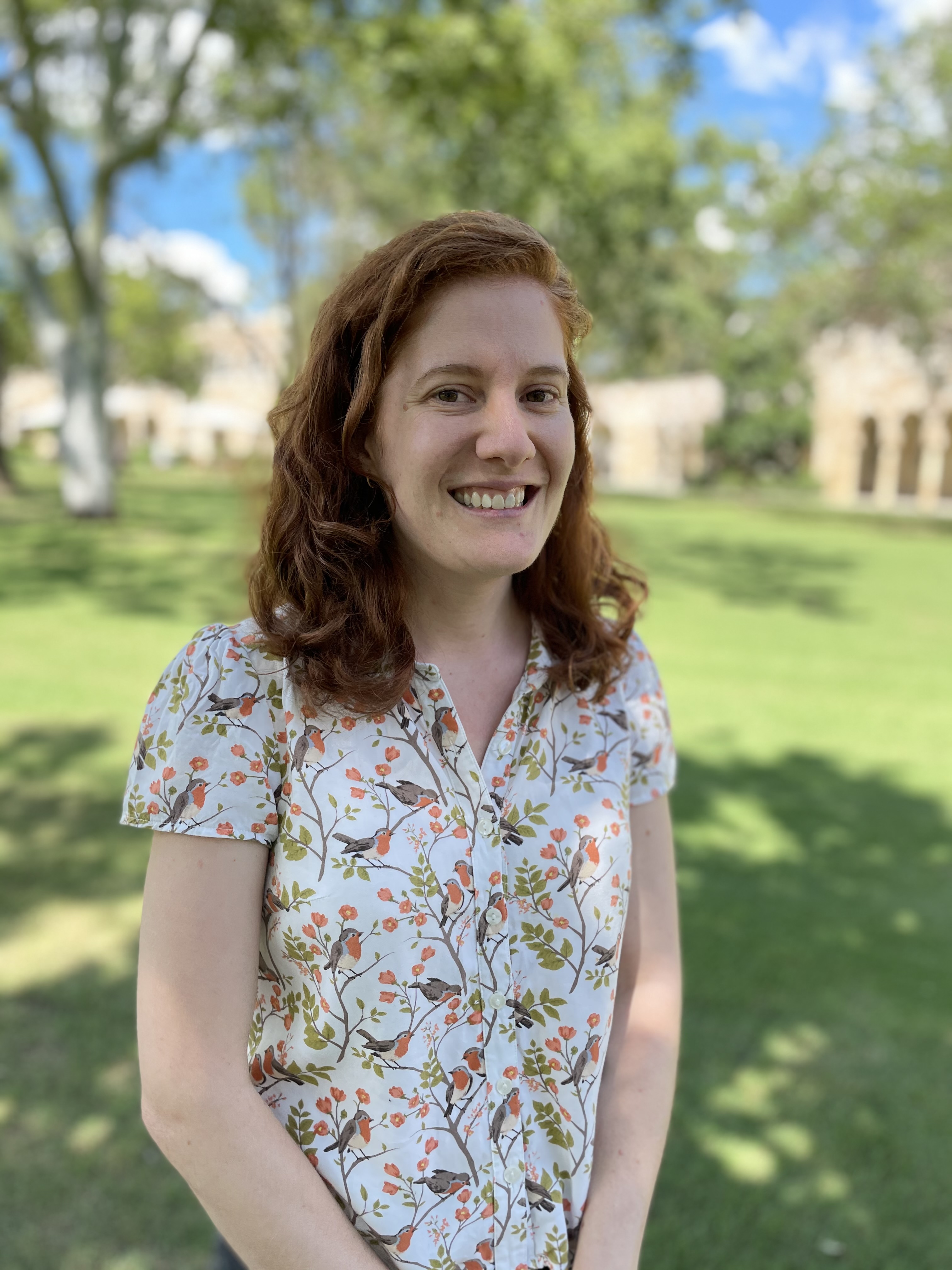 The 2022 recipient is Dr. Maddie E. James for her paper, “Phenotypic and genotypic parallel evolution in parapatric ecotypes of Senecio.” Evolution (2021) 75-12: 3115–3131.
The 2022 recipient is Dr. Maddie E. James for her paper, “Phenotypic and genotypic parallel evolution in parapatric ecotypes of Senecio.” Evolution (2021) 75-12: 3115–3131.
In this paper, Dr. James and co-authors investigated potential parallel evolution in dune and headland ecotypes of the Australian wildflower Senecio lautus. A comparison of nine dune-headland pairs, most phylogenetic sister groups, found strong parallel evolution of phenotype of branch and leaf traits with dune plants tall and headland plants prostrate. Despite phenotypic similarity among populations within each ecotype, evolutionary change was found in different genes. However, further investigation found a number of these genes had the same predicted function. This study shows response to selection that leads to parallel phenotypes is more complex when viewed at the underlying genetic level. Dr. James earned her Ph.D. at the University of Queensland, where she is now a Postdoctoral Research Fellow.
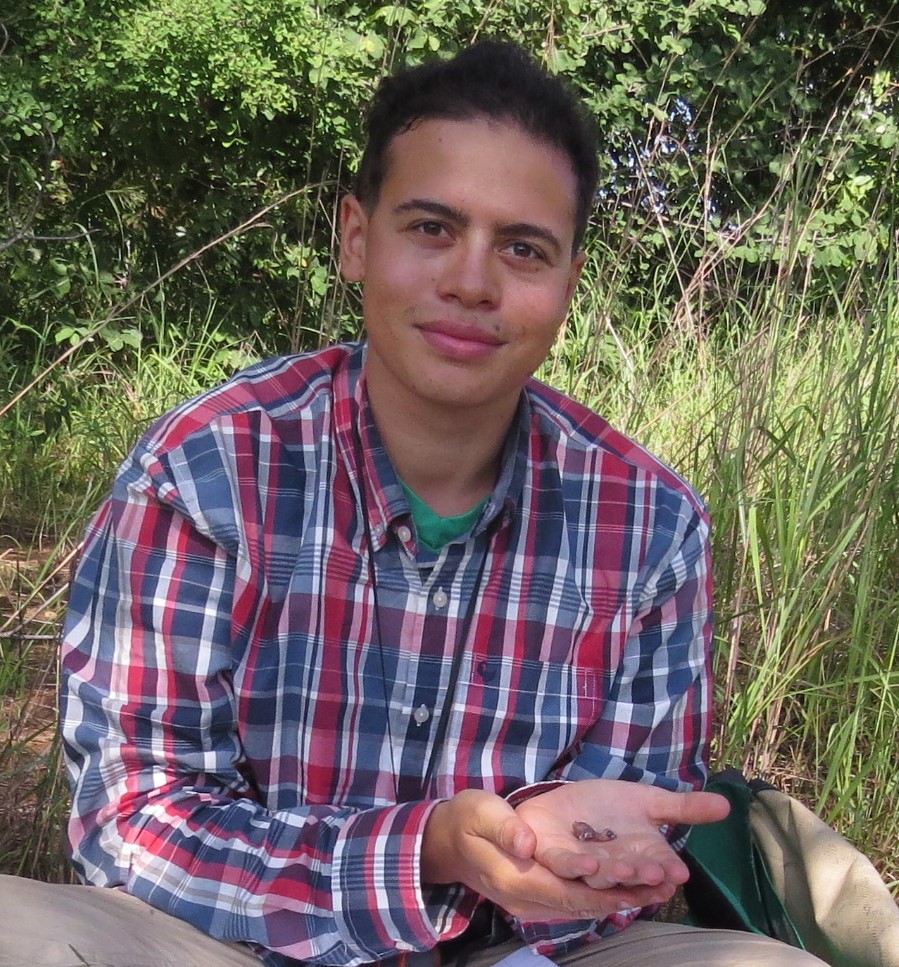 The 2021 recipient is Dr. Gabriel Jamie for his paper, “Multimodal mimicry of hosts in a radiation of parasitic finches,” Evolution (2020) 74: 2526-2538.
The 2021 recipient is Dr. Gabriel Jamie for his paper, “Multimodal mimicry of hosts in a radiation of parasitic finches,” Evolution (2020) 74: 2526-2538.
In this paper, Dr. Gabriel Jamie and co-authors investigated host-specific multimodal mimicry by nestlings of brood-parasitic Vidua indigobirds and whydahs to assess their role in adaptation to novel hosts. The premise was that imprinting of parasitic nestlings on their hosts promotes the maintenance of specialized host-parasite associations over generations. This exposes lineages to consistent selection from host species that could allow host-specific nestling adaptations to evolve. Over four rainy seasons in Zambia, Dr. Jamie and his research assistants recorded aspects of nestling morphology and behavior, and developed a new methodology to quantify phenotypes. Remarkable matching was found in the patterns and colors of the parasitic nestlings and the nestlings of their different host species, whose diverse appearances can be seen in the cover photo of the issue (74:11). The team also found matching in the sounds and postural movements of the nestlings. This study shows that imprinting can lead to the evolution of host-specific mimetic adaptations that can generate pre- and post-zygotic isolation and contribute to sympatric speciation. Dr. Jamie earned his Ph.D. at the University of Cambridge, where he is now a BBSRC-funded post-doctoral research associate. He is also a research associate of the FitzPatrick Institute of African Ornithology at the University of Cape Town.
The 2020 winner is Dr. Dorota Paczesniak for her paper, "Parasite resistance predicts fitness better than fecundity in a natural population of the freshwater snail Potamopyrgus antipodarum," Evolution (2019) 73: 1634-1646.
A longstanding question in evolutionary biology is what evolutionary processes determine whether a species is sexual or asexual. Dr. Paczesniak addressed this question in a species of freshwater snail, Potamopyrgus antipodarum, native to New Zealand. Using mesocosms in a field setting, she found that the most fecund asexual clones had annual reproductive rates equal to or greater than the most fecund 10% of sexual families, indicating that fecundity selection is sufficient to favor the proliferation of asexual clones, over and above the expected two-fold cost of sex. Somewhat paradoxically, however, she found that the most fecund asexual clones were not the most predominant ones. Because the mesocosms excluded predators and parasites, she hypothesized that differential predation or parasitism might explain this pattern. This hypothesis was confirmed by an experiment that demonstrated a positive correlation between clone abundance in the field and resistance to parasitism in the laboratory. This study thus elegantly demonstrates the importance of interactions with natural enemies in determining the fitness and relative abundance of asexual clones in a natural population. Dr. Paczesniak earned her PhD at the ETH Zurich, and recently completed a postdoctoral fellowship at the University of Saskatchewan.
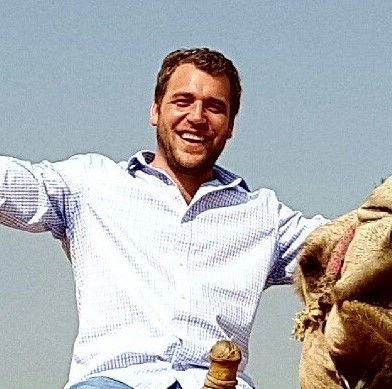 The 2019 winner is Dr. Matthew Zuellig for his paper, “A two‐locus hybrid incompatibility is widespread, polymorphic, and active in natural populations of Mimulus” Evolution (2018) 72: 2394-2405.
The 2019 winner is Dr. Matthew Zuellig for his paper, “A two‐locus hybrid incompatibility is widespread, polymorphic, and active in natural populations of Mimulus” Evolution (2018) 72: 2394-2405.
How do barriers that bar reproduction between two species arise and persist within each of the species, in spite of ongoing gene flow between them? To address this question, Dr. Zuellig studied two naturally hybridizing species of monekyflower, Mimulus guttatus and M. nasutus. He had previously identified a two‐locus hybrid lethality system, in which each species carries a hybrid lethality allele at a different locus, resulting in hybrid offspring that lack chlorophyll in F2 and later generations. Building on this finding, he here conducted extensive series of crosses with plants sampled across a large geographic range of western U.S. to map the spatial distribution of alleles underlying this system and estimate their frequencies. Because both species also have alternative alleles at substantial frequencies in some populations, hybrids do not necessarily result in lethality, allowing some introgression. This work elegantly explores how "speciation loci" that were first identified in the lab behave in real populations across their range. Dr. Zuellig earned his Ph.D. at the University of Georgia and is now a postdoctoral fellow at the University of Bern.
 The 2018 winner is Dr. Valerie Morley for her paper, “Dynamics of molecular evolution in RNA virus populations depend on sudden versus gradual environmental change” Evolution (2017) 71:872-883.
The 2018 winner is Dr. Valerie Morley for her paper, “Dynamics of molecular evolution in RNA virus populations depend on sudden versus gradual environmental change” Evolution (2017) 71:872-883.
Do organisms evolve differently in slowly versus rapidly changing environments? In this study, Dr. Morley examined the evolutionary dynamics of the RNA sequence of Sindbis virus, exposed either directly to a novel host or to a gradually increasing proportion of that host. By sampling and sequencing in depth at eight time points, Dr. Morley and co-authors were able to track the genetic changes that occurred in precise detail. Their study revealed that large-step mutations were more likely to fix during the early stages of evolution with a sudden host switch, but this pattern disappeared with a gradual switch. As selection was weaker and fixation took longer in the gradually changing treatment, there was more evidence of clonal interference and the fixation of clusters of mutations. By contrast, single mutations were more likely to sweep in the sudden treatment. By combining experimental evolution with whole-genome sequencing, the paper by Morley et al. provides novel insights into the ways that populations adapt to a changing world.
The 2017 winner is Dr. Megan Greischar, for her paper “Predicting optimal transmission investment in malaria parasites.” Evolution (2016) 70:1542-1558.
In this study, Dr. Greischar examined the growth-reproduction tradeoff faced by malaria parasites, which must allocate resources to within-host proliferation as well as the production of specialized life stages for onward transmission. The way parasites balance this tradeoff influences exploitation of host resources---and hence virulence---and the rate of disease spread through host populations. She built a within-host model to examine the conflicting selection pressures and identify the optimal allocation to transmission. She developed novel computational methods to consider a wide range of potential strategies, using splines to describe plastic allocation with few parameters. The model suggested that parasites benefit from delaying transmission stage production, just as macroorganisms can benefit from delayed reproductive effort. Innate immunity and coinfecting parasites imposed strong selection favoring parasites that invest disproportionately in proliferation rather than transmission (“reproductive restraint''), resulting in more rapid and extreme exploitation of host resources. Selection on transmission investment therefore represents one mechanism by which enhanced virulence could be adaptive for parasites. More generally, the approach can accommodate highly complex strategies within richly detailed ecological models, providing a much-needed alternative to analytical methods that could be adapted to diverse organisms.
The 2016 winner is Dr. Jennifer N. Lohr, for her paper: Lohr, J. N., and C. R. Haag. 2015. Genetic load, inbreeding depression, and hybrid vigor covary with population size: An empirical evaluation of theoretical predictions. Evolution 69:3109-3122.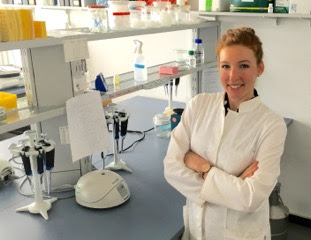
In this paper, Lohr and Haag test predictions from population genetic theory on the genetic consequences of small population size, a fundamental question in evolutionary biology. Lohr used eight natural populations of Daphnia magna that varied in effective population size, along with carefully designed crosses within and among populations, to test these predictions. She showed that Ne accurately predicted inbreeding depression, genetic load, and hybrid vigor, strongly supporting theoretical predictions based on recurrent mutation to unconditionally deleterious alleles. These results have important implications for evolutionary processes in natural populations, including for the evolution of dispersal, breeding systems, local adaptation, and aging.
Dr. Lohr received her PhD in 2015 from the Department of Biology at the University of Fribourg, with Christopher Haag. She is now a Postdoctoral Research Associate at the University of Hamburg with Susanne Dobler.
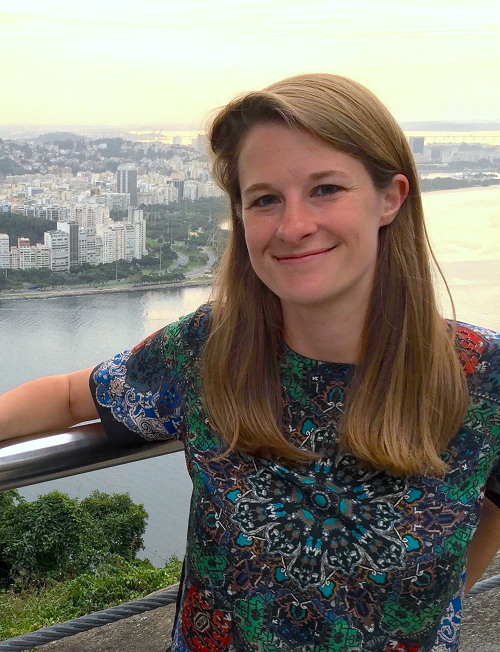 The 2015 winner is Dr. Alison E. Wright, for her paper: Alison E. Wright, Peter W. Harrison, Stephen H. Montgomery, Marie A. Pointer and Judith E. Mank. 2014. Independent stratum formation on the avian sex chromosomes reveals inter-chromosomal gene conversion and predominance of purifying selection on the W chromosome. Evolution. 68(11):3281–3295.
The 2015 winner is Dr. Alison E. Wright, for her paper: Alison E. Wright, Peter W. Harrison, Stephen H. Montgomery, Marie A. Pointer and Judith E. Mank. 2014. Independent stratum formation on the avian sex chromosomes reveals inter-chromosomal gene conversion and predominance of purifying selection on the W chromosome. Evolution. 68(11):3281–3295.
In this paper, Wright and co-authors used a comparative approach across a monophyletic clade of birds, spanning 90 million years, to study the mode, mechanism and rate of divergence between the avian Z and W sex chromosomes. This work, based on the largest cross-species dataset of Z-W orthologs to date, revealed the complex recombinational history of the avian sex chromosomes. The results show that although birds share the same sex chromosome system, recombination between the sex chromosomes has been suppressed independently multiple times, allowing for convergent patterns of divergence. Wright and her co-authors also found that recombination and gene conversion persist on sex chromosomes over both long and short evolutionary trajectories. Importantly, the study shows that the female-limited and degenerated W chromosome is evolving with a significant contribution of purifying selection, indicating that the remaining W-linked genes play an important role in female-specific fitness.
Dr Wright received her PhD in 2014 from the Department of Zoology at the University of Oxford, with Judith Mank. She is now a Postdoctoral Research Associate at University College London.
The 2014 winner is Dr. Amy Hurford for her paper: Hurford, A. and T. Day. 2013. Immune evasion and the evolution of molecular mimicry in parasites. Evolution 67(10): 2889-2904. 
Hurford explored a variety of hypotheses about the coevolution of vertebrate immune systems and pathogens, using mathematical models. One of her primary goals was to understand the evolutionary origins of infection-induced autoimmune disorders. She developed mathematical models using techniques from dynamical systems and game theory to better understand the conditions under which we might expect pathogens to evolve molecular mimicry. She and her coauthor analyzed the patterns of molecular mimicry that are expected under two hypotheses regarding molecular mimicry by parasites. One of their findings was that the highest risk of autoimmunity comes from parasites that display intermediate levels of mimicry. Interestingly, and highly relevantly, they also explored the consequences of different medical interventions on the evolution of mimicry and the incidence of autoimmunity.
Dr. Hurford received her Ph.D. in 2011 from the Department of Mathematics and Statistics at Queens University, where he was advised by Dr. Troy Day. Following postdoctoral appointments at York University and the University of Toronto, she began a faculty position at Memorial University of Newfoundland.